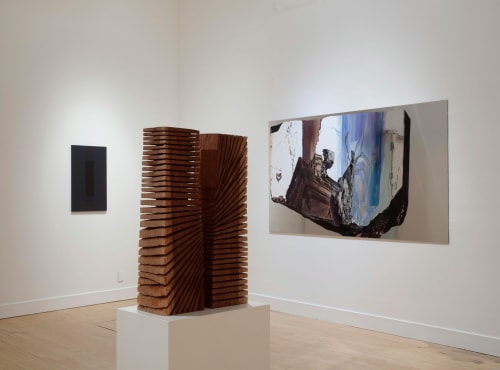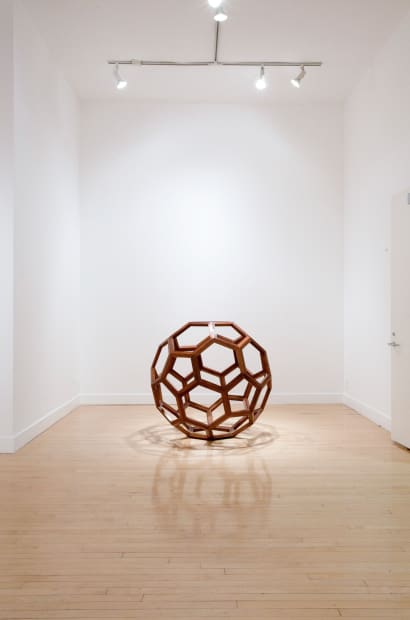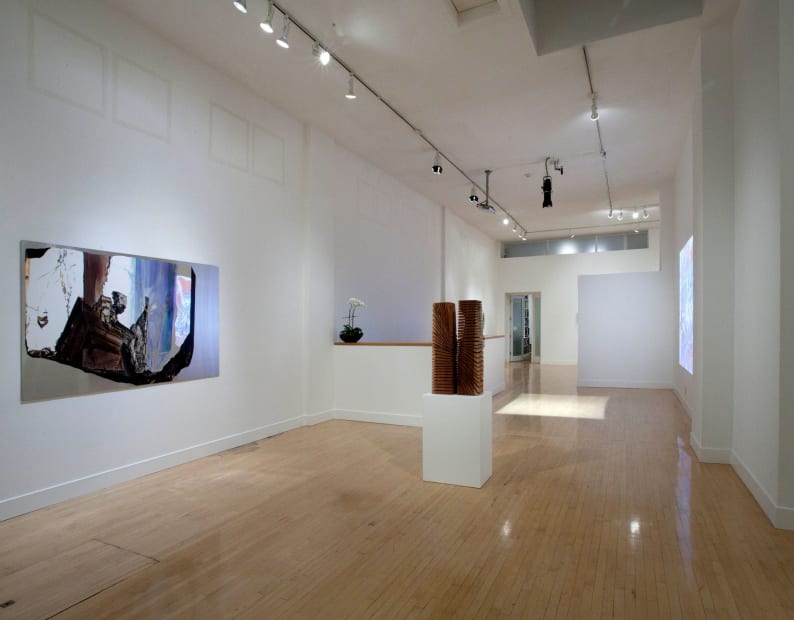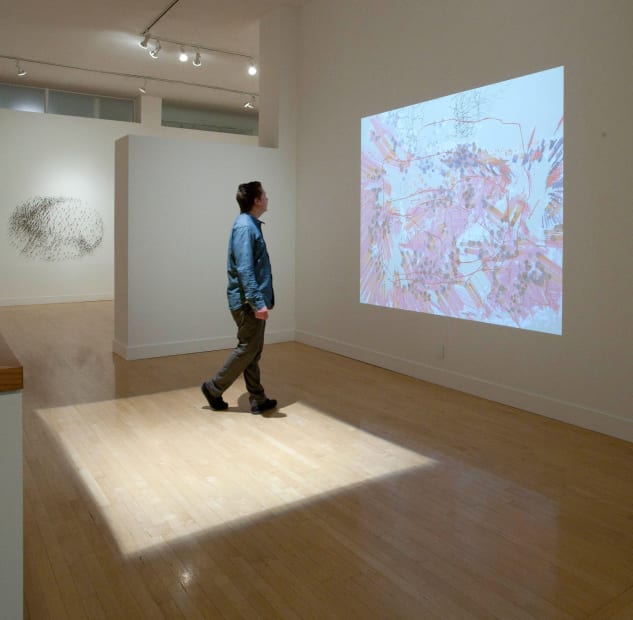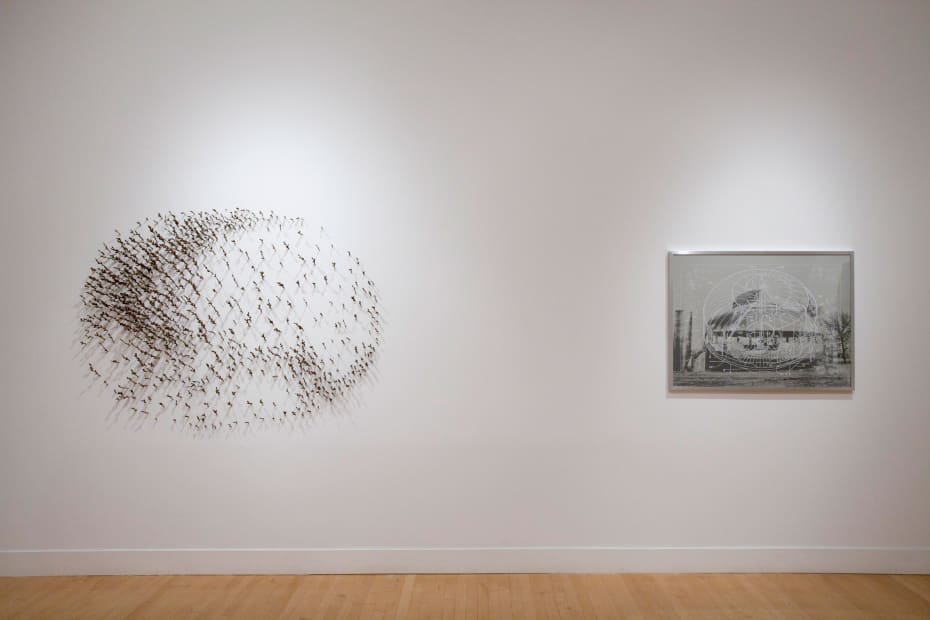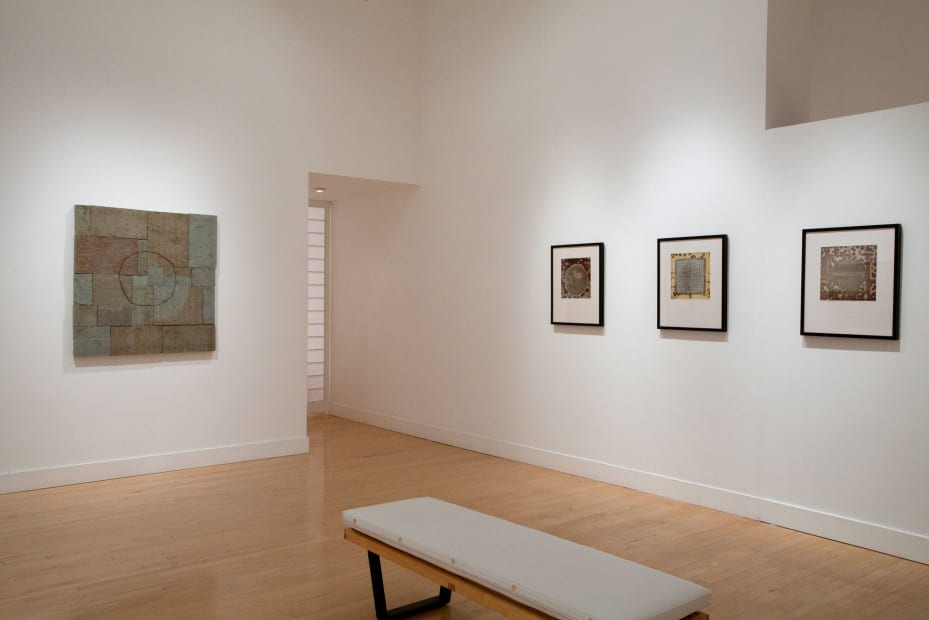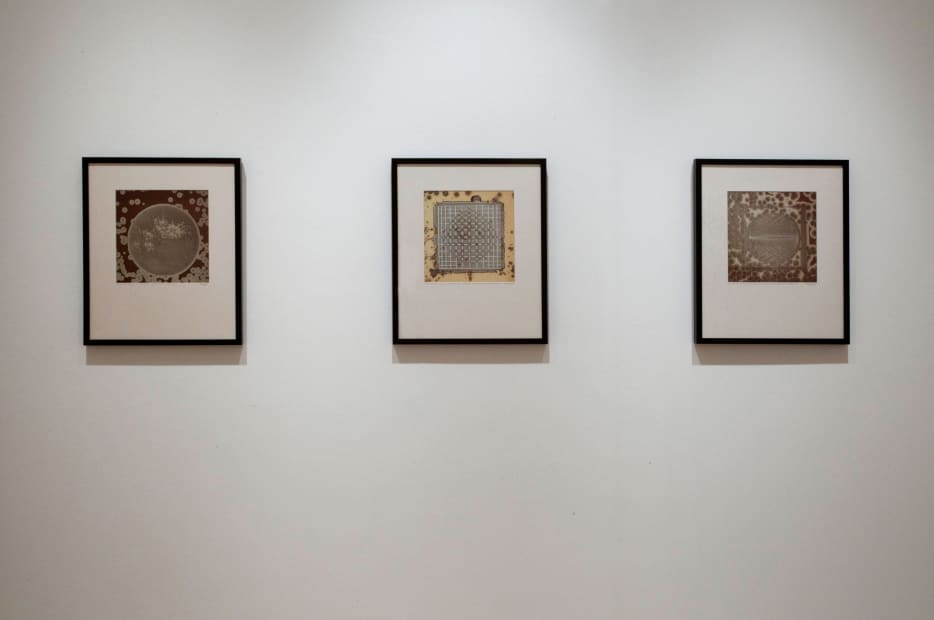Poetics of Construction
Our intervention with the world is invariably shaped by the composed form. Even in the seemingly limitless digital society with which we are obliged to interact, our negotiations with physical and conceptual space is predetermined. But as poetry in language grants aesthetic freedom to expand prescribed bounds of expression, a visionary approach to the technical patterns that surround us not only permit but also invite us to reexamine our experiential environment.
Haines Gallery’s Poetics of Construction brings together an international roster of creative minds to reconsider the nature of process and how form influences perception. Various degrees of interactivity activate geometric patterns within and between each part of the exhibition.
AI WEIWEI | F Size | Ai Weiwei’s geometric huali wood sculptures are assembled without nails using traditional joinery techniques. F Size is a truncated icosahedron, its shape similar to the surface pattern on a soccer ball. Leonardo da Vinci illustrated this form, consisting of twelve pentagons and twenty hexagons, for mathematician Luca Pacioli’s 1509 treatise De Divina Proportione [The Divine Proportion]. Ai has articulated several works using this architectural form, focusing either on the framework or on the solid faces of the component shapes.
PIERRE CORDIER | Chemigrams | Working more like a painter or printmaker than a photographer, Pierre Cordier replaces the canvas or printing plate with photographic paper. Using photographic chemicals – as well as varnish, wax, glue, oil, egg and syrup – he creates enigmatic images that are impossible to realize by any other means. These chemigrams are the ultimate adventure in gelatin silver bromide. In Cordier’s work, the process itself becomes the artwork and his style is his technique.
MONIR FARMANFARMAIAN | Decagon & Monagon | For the last half-century, Iranian artist Monir Farmanfarmaian has expressed her singular vision through reverse-painted glass and mirror objects that recall both Qajar-era Persian interior decoration and high modernist abstraction of the 20th century. Having lived in New York during the 1940s and 1950s as an art student at Cornell University and the Parsons School of Design and later as a fashion illustrator for the department store Bonwit Teller alongside Andy Warhol, she absorbed the art of the new Abstract Expressionism. This novel perspective – when layered upon her existing awareness of the arts and crafts of her native Iran and the refined historical decoration of its ancient cities – produced a singular aesthetic fusion of Persian pictorial language and pristine geometry. Her work at once references the spiritual geometries of Islamic architecture, most notably the tenants of Sufism, but with a distinctly post-modern edge. In her three-dimensional panels, Farmanfarmaian meticulously cuts and fits mirrors and glass that when adhered with stucco produce new, remarkable objects that reflect both cultural and actual place.
BUCKMINSTER FULLER | Patent Invention Drawings | The Patent Invention Drawings consists of two screen printed sheets, one of which illustrates drawings for a patent invention by Fuller, and underneath, the second sheet illustrates the realization of the concept. They are screen printed in white ink on a clear polyester film. The accompanying photo realization of each invention is a screen print on Lenox 100 percent rag paper. Each print is signed and numbered by Buckminster Fuller on the clear film element.
Dymaxion Dwelling Machine—Wichita House, United States Patent Office filed March 16, 1946 by Buckminster Fuller. The “Wichita House” was inspired in 1944 by the possibility of post-World War II conversion of the aircraft industry to the production of housing units. Work space at their Wichita, Kansas factory along with access to skilled engineering personnel and tools ewas contributed by Beech Aircraft. Circular in form, the Wichita House was a structure tensionally suspended from a central mast and braced to the ground. No single part weighed more than ten pounds or needed more than one hand to be held in place, making assembly feasible for one person. Most of the parts nested for shipping, and all the parts fit into a cylindrical shipping container. Cost estimates suggested that once the mass production phase was activated, the completed house, installed, could be sold for $6,500.
ANDY GOLDSWORTHY | Circle, Flame Finished, Broken Pavers Leftover from the de Young Museum | In 2005, Andy Goldsworthy was commissioned by the de Young Museum in San Francisco to create a permanent installation for the re-opening of the museum. Goldsworthy transformed the entry courtyard of the museum into "Drawn Stone," an installation of a giant crack in the courtyard’s pavement, echoing San Francisco's long history of earthquakes and their aftermath. "Circle, Flame Finished, Broken Pavers Leftover from the de Young Museum" is Goldsworthy's continuation of the idea of drawing with stone, but this stone drawing is a wall piece.
PATSY KREBS | Hibernal Dreams | In these works, Patsy Krebs applies a ground color on a wood panel, upon which she layers numerous coats of thinned acrylic washes in both horizontal and vertical bands, creating exquisite, ethereal gradations of color. For Krebs, these works reflect a kind of meditation on time. The central image boldly asserts the present, while repetitive, yet diminishing edges suggest the haze that characterizes our perception of the past and previous generations. Her use of the rectangle in these paintings formally resonates with oriental carpets and other textiles that employ complex central-image color-field compositions, in addition to recalling eastern orthodox icon painting and other icon-like images that exude a kind of interior light. By presenting these paintings at a small, intimate scale, she encourages contemplative, individual encounters with the works, as viewers investigate her subtle treatment of line, form and color.
DAVID NASH | Cuts Down to Cuts Across / Cuts Across to Cuts Down | In a career spanning 40 years, British sculptor David Nash has engaged in a focused and singular pursuit into understanding the nature of place through the creation of sculpture – predominantly in wood. Living in the rugged countryside of North Wales (Blaenau Ffestiniog), he crafts his sculptures based on both the growth patterns and characteristics of the trees and his concerns for the formal elements of contemporary sculpture and minimal form; the resulting works are poetically carved, sawn and charred. The violence of his tools – a chainsaw, an axe and fire — belies the grace of the final work. For Nash, the artistic process itself is deeply collaborative – between artist and material, place and perception. He adopts a responsive and adaptable approach, allowing nature to dictate the direction that his works will take.
YOSHITOMO SAITO | Rocky Mountain Winter #3 | This wall installation by Japanese sculptor Yoshitomo Saito is comprised of many hundred tips of bronze tree branches. Rocky Mountain Winter #3 conjures an image of a snow-covered Colorado landscape, with the branches of a shrouded tree reaching for the spring to come. This sculptural poem speaks to nature’s patience, hope for life and its prosperity. A commitment to process is a hallmark of Saito’s practice. His sculptures are meticulous, hand-cast bronze objects produced in his own studio foundry. Trained in the lost wax — or investment mold — process, Saito has cast from objects as varied as pillows, stretched canvas and cardboard, though historically his most consistent subjects are materials from the landscape.
LESLIE SHOWS | Face series | With this series, Leslie Shows continues her investigation of the connectivity of philosophies of matter and ontology, geology and the materiality of painting. Using sheets of plexiglass, inks, mylar, crushed glass, metal dust and engraving, Shows has reconstructed images of two pyrite rocks – more commonly known as fool’s gold – on thin, reflective aluminum panels. For Shows, the luminous reflectivity and multifaceted appearance of pyrite gives visual representation to her conceptual concern with the various lenses through which we understand objecthood. The resulting paintings appear abstract, yet are photo-realistically constructed.
CAMILLE UTTERBACK | Untitled 5 from the External Measures Series | Untitled 5 is the fifth interactive installation in the External Measures Series, a highly sophisticated immersive new media experience which Utterback has been developing since 2001. The goal of these works is to create an aesthetic system, which responds fluidly and intriguingly to physical movement in the exhibit space. The installations respond to their environment via input from an overhead video camera. Custom video tracking and drawing software outputs a changing wall projection in response to the activities in the space. The existence, positions, and behaviors of various parts of the projected image depend entirely on people’s presence and movement in the exhibit area. Untitled 5 creates imagery that is painterly, organic, and evocative while still being completely algorithmic.
Integral to the piece are the animated marks’ cumulative interaction with each other over time. As a person moves through the space, a colored line maps his or her trajectory across the projection. These marks can be pushed from their location by other people’s movement in the space. Displaced trajectory marks attempt to return to their original location, creating smears and streaks of color as they move. The resulting swaths of color occur at the intersections between current and previous motion in the space, elegantly connecting different moments of time.

